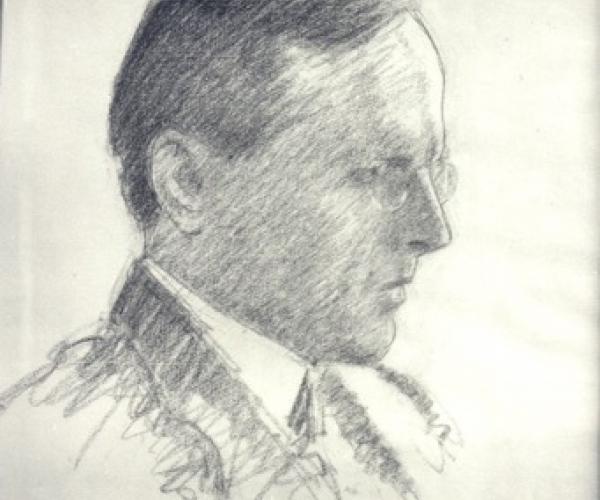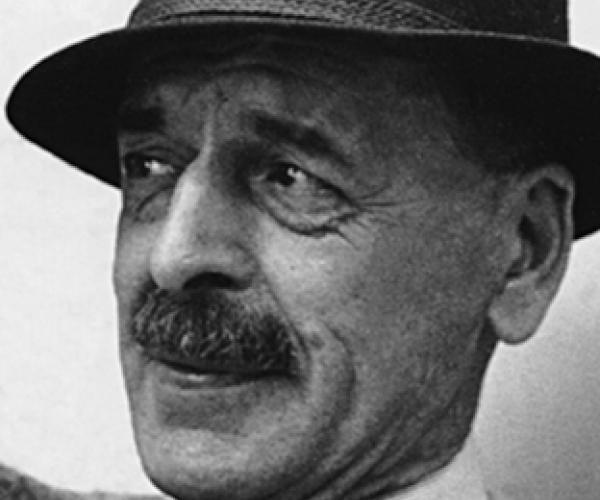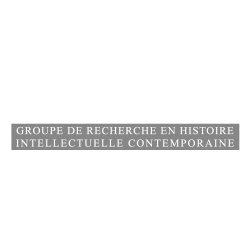The Swiss Institute in Rome
As early as 1945, Countess Carolina Maraini-Sommaruga (1869-1959), widow of Emilio Maraini (1853-1916), an industrialist and philanthropist from the Ticino living in Italy, informed the Federal authorities of her intention to bequeath her beautiful villa on the Pincio to the Confederation to be converted into a cultural centre, intended to mark the artistic and scientific collaboration between Switzerland and Italy.The Federal authorities gratefully accepted and carried out a carefully planned academy project, which led to the creation of the Istituto Svizzero di Roma. Its definitive organisational form as a private foundation was guaranteed in 1947, and the opening ceremony was solemnly celebrated on the 19th of April 1949.
The city of Rome, with its artistic heritage and grandiose history has maintained its reputation as a meeting place throughout the ages. Today there are over twenty foreign academies and institutes in Rome, as well as Italian institutes, providing an open network for cultural exchange, which is unique. In 1666, French artists already had an academy founded by Louis XIV. By the second half of the 19th century, numerous academies had opened their doors, following the example of the Academy of France in Rome, located in the Villa Medici (1803), including the Deutsches Archäologisches Institut (1871), The École française (1873); the Österreichisches Historisches Institut (1881), the British School at Rome (1901), the American School of Architecture in Rome (1894) and the American School of Classical Studies in Rome (1895), which merged in 1913 to become the American Academy in Rome.
Switzerland’s late arrival in Rome’s well-established cosmopolitan network of foreign academies and institutes highlighted the delays in Switzerland’s foreign cultural policy. The creation of the Swiss Institute of Rome in 1947 answered the prayers of Swiss as well as other circles of foreigners in the Italian capital. World War II and its impact on German institutes in Italy strengthened the awareness of Switzerland’s cultural independence and of the need to create its own institute in Rome.
Devised as a space for training, representation, and intellectual sociability, the Institute immediately played an important role in Swiss Italian cultural relations by offering young artists and Swiss scientists the opportunity to deepen their knowledge in Rome, the centre of classical culture. From the beginning, the Institute was also supposed to: … contribute to the development of intellectual relations between Switzerland and Italy by organising cultural and artistic events and by dint of the relationships it maintained with Italian and foreign institutions located in Rome
.
For more than sixty years, the Institute has welcomed generations of scholars and artists who in their role as cultural mediators have contributed to the enrichment of Swiss Italian relations. Many exhibitions, conferences and other events have allowed Rome’s international public to discover the multifaceted approach of Swiss scientific research and art. In addition to its headquarters in Rome, the Institute has two cultural centres in Milan and Venice, which also reflect the spirit of collaboration.
Since 2007, Pro Helvetia has mainly subsidised the Institute’s cultural programmes, while the State Office for Research & Education has funded research. Over the years, depending on the trustees of the Foundation and its directors, the institution began to thrive in an ever-changing globalised world. Many of the young artists and scientists, who stayed at the Swiss Institute, have gone on to successful careers in high schools, universities, as exhibition or museum curators, archivists, journalists, etc. The long list of former members of the Swiss Institute in Rome includes names like Luc Boissonnas, former Secretary General of Pro Helvetia (1952-53), Paul Nizon, Jacqueline Burckhardt, André Hurst, and Werner Oechslin. (nlp)










